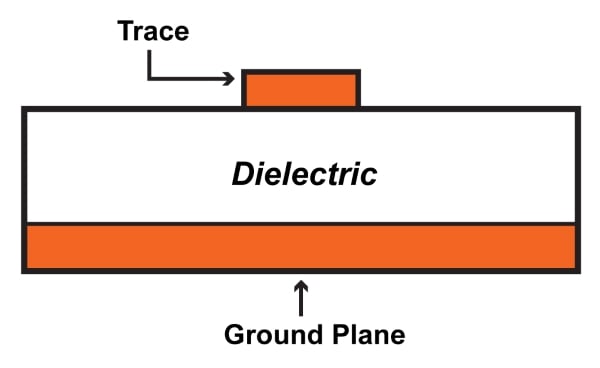Products Category
- FM Transmitter
- 0-50w 50w-1000w 2kw-10kw 10kw+
- TV Transmitter
- 0-50w 50-1kw 2kw-10kw
- FM Antenna
- TV Antenna
- Antenna Accessory
- Cable Connector Power Splitter Dummy Load
- RF Transistor
- Power Supply
- Audio Equipments
- DTV Front End Equipment
- Link System
- STL system Microwave Link system
- FM Radio
- Power Meter
- Other Products
- Special for Coronavirus
Products Tags
Fmuser Sites
- es.fmuser.net
- it.fmuser.net
- fr.fmuser.net
- de.fmuser.net
- af.fmuser.net ->Afrikaans
- sq.fmuser.net ->Albanian
- ar.fmuser.net ->Arabic
- hy.fmuser.net ->Armenian
- az.fmuser.net ->Azerbaijani
- eu.fmuser.net ->Basque
- be.fmuser.net ->Belarusian
- bg.fmuser.net ->Bulgarian
- ca.fmuser.net ->Catalan
- zh-CN.fmuser.net ->Chinese (Simplified)
- zh-TW.fmuser.net ->Chinese (Traditional)
- hr.fmuser.net ->Croatian
- cs.fmuser.net ->Czech
- da.fmuser.net ->Danish
- nl.fmuser.net ->Dutch
- et.fmuser.net ->Estonian
- tl.fmuser.net ->Filipino
- fi.fmuser.net ->Finnish
- fr.fmuser.net ->French
- gl.fmuser.net ->Galician
- ka.fmuser.net ->Georgian
- de.fmuser.net ->German
- el.fmuser.net ->Greek
- ht.fmuser.net ->Haitian Creole
- iw.fmuser.net ->Hebrew
- hi.fmuser.net ->Hindi
- hu.fmuser.net ->Hungarian
- is.fmuser.net ->Icelandic
- id.fmuser.net ->Indonesian
- ga.fmuser.net ->Irish
- it.fmuser.net ->Italian
- ja.fmuser.net ->Japanese
- ko.fmuser.net ->Korean
- lv.fmuser.net ->Latvian
- lt.fmuser.net ->Lithuanian
- mk.fmuser.net ->Macedonian
- ms.fmuser.net ->Malay
- mt.fmuser.net ->Maltese
- no.fmuser.net ->Norwegian
- fa.fmuser.net ->Persian
- pl.fmuser.net ->Polish
- pt.fmuser.net ->Portuguese
- ro.fmuser.net ->Romanian
- ru.fmuser.net ->Russian
- sr.fmuser.net ->Serbian
- sk.fmuser.net ->Slovak
- sl.fmuser.net ->Slovenian
- es.fmuser.net ->Spanish
- sw.fmuser.net ->Swahili
- sv.fmuser.net ->Swedish
- th.fmuser.net ->Thai
- tr.fmuser.net ->Turkish
- uk.fmuser.net ->Ukrainian
- ur.fmuser.net ->Urdu
- vi.fmuser.net ->Vietnamese
- cy.fmuser.net ->Welsh
- yi.fmuser.net ->Yiddish
-
How to Demodulate an AM Waveform
Radio Frequency Demodulation Learn about two circuits that can extract the original information from an amplitude-modulated carrier signal. At this point we know that modulation refers to intentionally modifying a sinusoid such that it can carry lower-frequency information
Posted on:05-22 View:91 -
Comparing and Contrasting Amplitude, Frequency, and Phase Modulation
Radio Frequency Modulation How do the different modulation schemes compare in terms of performance and applications? Let’s take a look. It’s important to understand the salient characteristics of the three types of RF modulation. But this information doesn’t exist
 Posted on:05-22 View:25
Posted on:05-22 View:25 -
Digital Phase Modulation: BPSK, QPSK, DQPSK
Radio Frequency Modulation Digital phase modulation is a versatile and widely used method of wirelessly transferring digital data. In the previous page, we saw that we can use discrete variations in a carrier’s amplitude or frequency as a way of representing ones and zeros.
 Posted on:05-22 View:58
Posted on:05-22 View:58 -
Digital Modulation: Amplitude and Frequency
Radio Frequency Modulation Though based on the same concepts, digital-modulation waveforms look quite different from their analog counterparts. Though far from extinct, analog modulation is simply incompatible with a digital world. We no longe
 Posted on:05-22 View:23
Posted on:05-22 View:23 -
Phase Modulation: Theory, Time Domain, Frequency Domain
Radio Frequency Modulation Phase modulation is similar to frequency modulation and is an important technique in digital communication systems. We have all heard of AM radio and FM radio. But phase modulation seems to be in a different category—“PM radio” is by no means a com
Posted on:05-22 View:29 -
Amplitude Modulation in RF: Theory, Time Domain, Frequency Domain
" Radio frequency (RF) is the oscillation rate of an alternating electric current or voltage or of a magnetic, electric or electromagnetic field or mechanical system in the frequency range from around 20 kHz to around 300 GHz. ----- FMUSER "
Posted on:05-22 View:80 -
The 50 Ω Question: Impedance Matching in RF Design
Real-Life RF Signals Impedance matching is a fundamental aspect of RF design and testing; the signal reflections caused by mismatched impedances can lead to serious problems. Matching seems like a trivial exercise when you’re dealing with a theoretical circuit composed of a
 Posted on:05-22 View:14
Posted on:05-22 View:14 -
Understanding Reflections and Standing Waves in RF Circuit Design
Real-Life RF Signals High-frequency circuit design must account for two important though somewhat mysterious phenomena: reflections and standing waves. We know from our exposure to other branches of science that waves are associated with special types of behavior. Light wav
 Posted on:05-22 View:40
Posted on:05-22 View:40 -
Transmission Line and RF
Real-Life RF Signals High-frequency interconnects require special consideration because they often behave not as ordinary wires but rather as transmission lines. In low-frequency systems, components are connected by wires or PCB traces. The resistance of these conductive el
 Posted on:05-22 View:14
Posted on:05-22 View:14 -
Coupling and Leakage in RF Systems
Real-Life RF Signals RF design and analysis requires an understanding of the complex ways in which high-frequency signals move through a real circuit. RF design is known to be particularly challenging among the various subdisciplines of electrical engineering. One
 Posted on:05-22 View:12
Posted on:05-22 View:12





